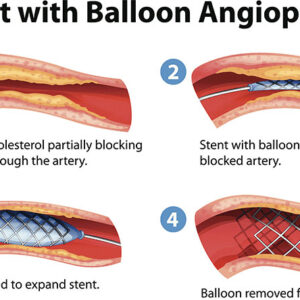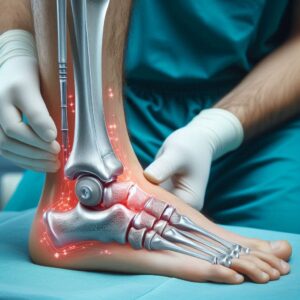Description
Familiarity with Treatment
Laser-assisted stapedotomy is a surgical procedure used to treat otosclerosis, a condition in which the stapes bone in the middle ear becomes fixed and unable to vibrate freely, leading to conductive hearing loss. The procedure involves using a laser to create a precise opening in the footplate of the stapes, allowing for improved transmission of sound into the inner ear.
Procedure
During laser-assisted stapedotomy, a CO2 laser is often used to create a small hole in the footplate of the stapes. This precise and controlled opening facilitates the placement of a prosthesis to restore the transmission of sound into the inner ear. The use of a laser allows for reduced trauma and improved precision compared to conventional stapedotomy techniques.
Who is it Suitable For?
Laser-assisted stapedotomy is suitable for individuals with otosclerosis, particularly in cases where the disease is minimal and confined to specific areas of the stapes. It may be considered in selected cases where normal mobility of the ossicular chain can be achieved without the need for a prosthesis.
Who is it Not Suitable For?
Laser-assisted stapedotomy may not be suitable for individuals with extensive otosclerosis or specific medical conditions that may affect the feasibility or safety of the procedure. A comprehensive evaluation by an otologic surgeon is necessary to determine the suitability for laser-assisted stapedotomy.
Advantages
- Precise Opening: The use of a laser allows for a precise and controlled opening in the footplate of the stapes, minimizing trauma to surrounding tissues.
- Reduced Inner Ear Trauma: The procedure is less invasive, reducing inner ear trauma and minimizing the risk of postoperative barotrauma.
- Potential for Improved Hearing: Laser-assisted stapedotomy may lead to improved hearing outcomes, particularly in cases of minimal otosclerosis.
Complications
Complications of laser-assisted stapedotomy may include:
- Perilymph Leakage: Uncontrolled leakage of perilymph, the fluid that fills the inner ear, is a potential complication of the procedure.
- Inner Ear Irradiation: There is a risk of irradiation of inner ear structures during the procedure, which can lead to damage.
- Pressure Waves: The occurrence of pressure waves during the procedure may pose a risk of subsequent damage to the inner ear.
Preoperative Care
Preoperative care for laser-assisted stapedotomy involves a comprehensive evaluation, including preoperative imaging, to confirm the diagnosis and assess the extent of otosclerosis. This evaluation helps in determining the suitability for the procedure and identifying any potential anatomical considerations.
Postoperative Care
Following laser-assisted stapedotomy, individuals should adhere to postoperative instructions provided by their healthcare team. This may include guidelines for wound care, pain management, and activity restrictions. Patients may also undergo postoperative audiological assessments to monitor hearing outcomes.
Laser-assisted stapedotomy is a surgical procedure aimed at treating otosclerosis by creating a precise opening in the footplate of the stapes.







Reviews
There are no reviews yet.